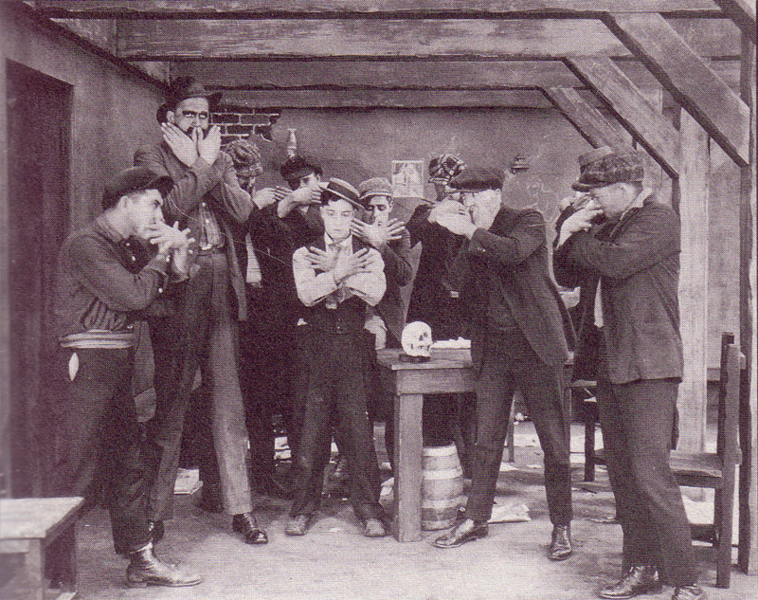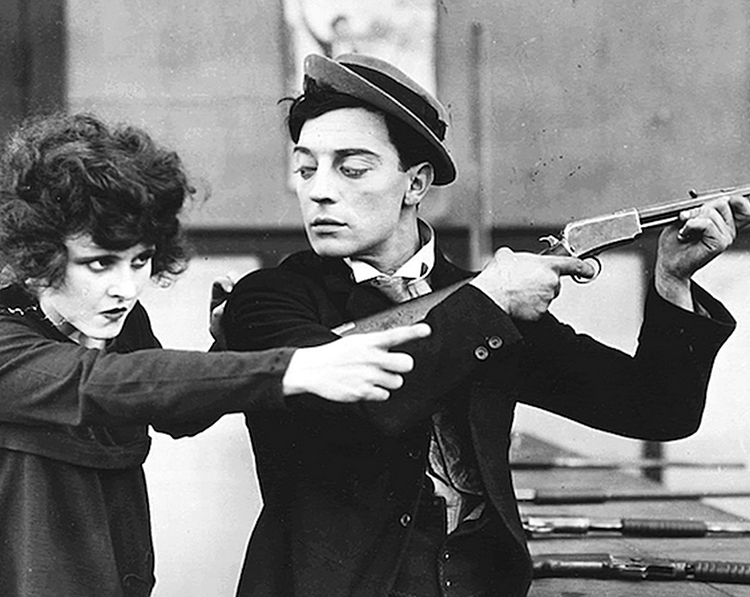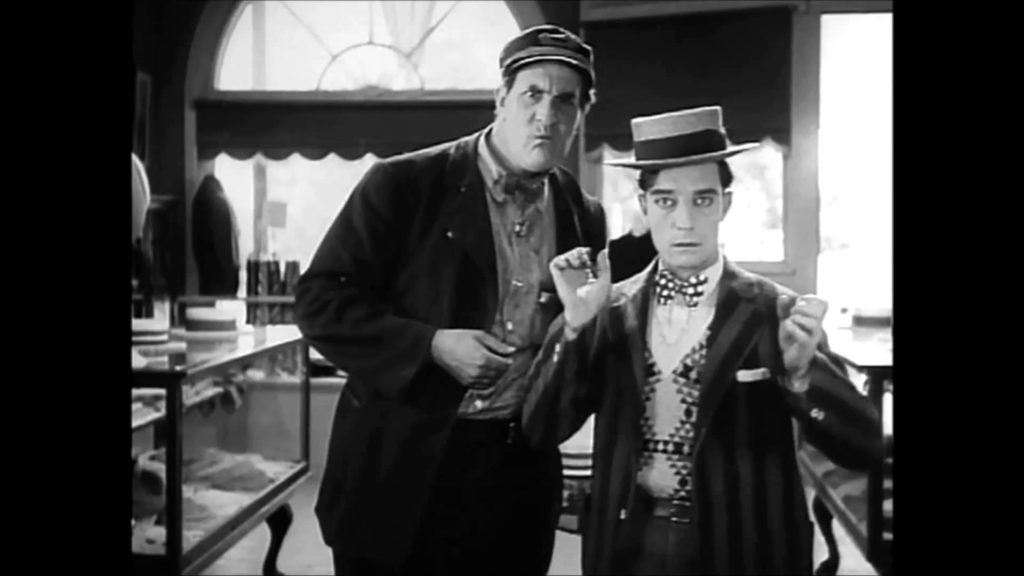
The High Sign is 20-minutes of Buster Keaton’s rapid-fire comedy from 1921. Buster plays a young man who cons his way into a job managing an amusement park shooting gallery and inadvertently becomes entangled with a murderous gang of thugs. The plot exists to set up two exquisite comic set pieces. In the first, Keaton sets up an elaborate Rube Goldberg device to trick the boss into believing that Keaton is a master marksman. And the second is a triumph of Keaton’s ingenuity, as the gang members chase him through a cutaway two-story house, complete with trap doors and secret passageways.
Of course the gang itself, the Blinking Buzzards, is ridiculous, especially when they flash their secret gang sign. There’s also humor in the contrast between the towering gang leader (6′ 3″ Joe Roberts) and the diminutive (5′ 5″) Keaton.
The High Sign is a two-reeler, a 20-minute short film. The conventional wisdom among early movie studio heads was that a comedy could only be sustain audience interest for 20 minutes. Keaton, Charlie Chaplin and Harold Lloyd would soon dispel that myth.
In fact, The High Sign came just before Keaton unleashed his string of comic masterpiece features: Sherlock, Jr. (1924), The Navigator (1924), Seven Chances (1925), The General (1926), Steamboat Bill, Jr. (1928) and The Cameraman (1928). After The Cameraman, Keaton’s new studio took away his creative control, and his career (and personal life) crashed.
I saw The High Sign at Cinequest, accompanied by world-renowned Dennis James on the Mighty Wurlitzer organ, before Steamboat Bill Jr. I recommend Sal Pizarro’s excellent profile of Dennis James in the Mercury News.
Also known as The “High Sign”, the film plays occasionally on Turner Classic Movies and possibly bootleg versions can be streamed on YouTube and Vimeo.


